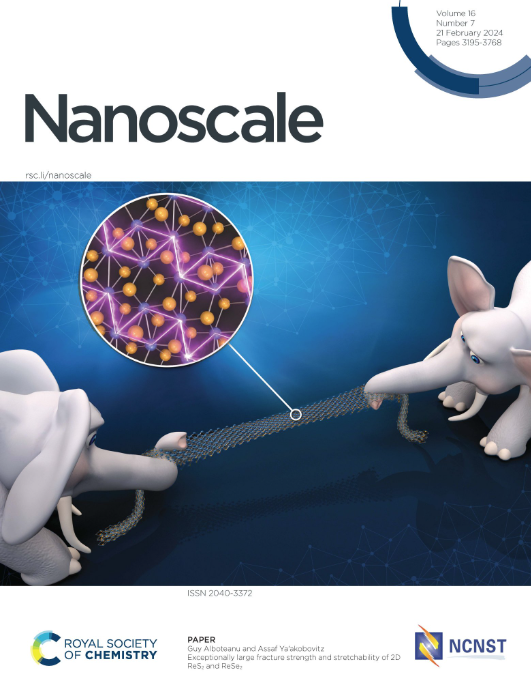Understanding the Emergence of Negative Photoconductivity in CVD grown ReS2 Thin Film Invoking Trion Generation Mechanism
IF 5.8
3区 材料科学
Q1 CHEMISTRY, MULTIDISCIPLINARY
引用次数: 0
Abstract
Emerging from robust Coulombic interactions and diminished dielectric screening, two-dimensional transition metal dichalcogenides (2D TMDs) manifest strongly bound excitons. While these pronounced many-body effects have been observed in 2D TMDs, their impact on the materials' intrinsic photoconductive characteristics remains relatively less explored. In this study, a considerable reduction in photoconductivity in chemically vapor deposited (CVD) ReS2 thin films has been observed. Through experimental and theoretical scrutiny, it is deduced that this anomalous phenomenon stems from the possible many-body interactions within the system, wherein photoexcited electron-hole pairs combine with excess electrons to generate trions. The formation of trions reduces the effective number of carriers contributing to photocurrent, thereby attenuating the photoconductivity. This study shows the profound influence of trion on photoconductivity behaviour of ReS2 thin films, thereby elucidating its significance in modulating optical and electrical properties crucial for optoelectronic applications.理解在 CVD 生长的 ReS2 薄膜中出现的负光电导引发的三离子生成机制
二维过渡金属二掺杂物(2D TMDs)具有强大的库仑相互作用和减弱的介电屏蔽,从而表现出强结合激子。虽然在二维 TMD 中已经观察到了这些明显的多体效应,但对它们对材料内在光电导特性的影响的探索仍然相对较少。在本研究中,我们观察到化学气相沉积(CVD)ReS2 薄膜的光电导性大大降低。通过实验和理论研究,我们推断出这种反常现象源于系统内可能存在的多体相互作用,即光激发的电子-空穴对与过剩电子结合产生三离子。三离子的形成减少了有助于产生光电流的载流子的有效数量,从而削弱了光导率。这项研究显示了三离子对 ReS2 薄膜光电导行为的深刻影响,从而阐明了三离子在调节对光电应用至关重要的光学和电学特性方面的重要意义。
本文章由计算机程序翻译,如有差异,请以英文原文为准。
求助全文
约1分钟内获得全文
求助全文
来源期刊

Nanoscale
CHEMISTRY, MULTIDISCIPLINARY-NANOSCIENCE & NANOTECHNOLOGY
CiteScore
12.10
自引率
3.00%
发文量
1628
审稿时长
1.6 months
期刊介绍:
Nanoscale is a high-impact international journal, publishing high-quality research across nanoscience and nanotechnology. Nanoscale publishes a full mix of research articles on experimental and theoretical work, including reviews, communications, and full papers.Highly interdisciplinary, this journal appeals to scientists, researchers and professionals interested in nanoscience and nanotechnology, quantum materials and quantum technology, including the areas of physics, chemistry, biology, medicine, materials, energy/environment, information technology, detection science, healthcare and drug discovery, and electronics.
 求助内容:
求助内容: 应助结果提醒方式:
应助结果提醒方式:


